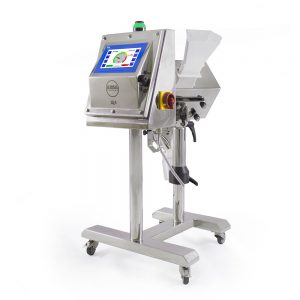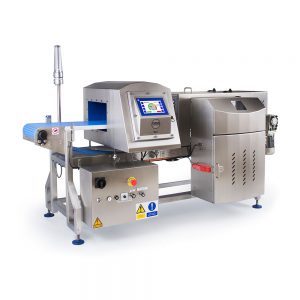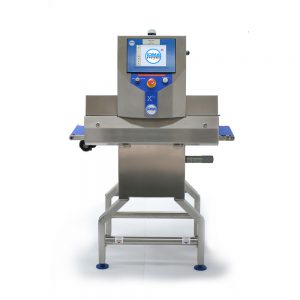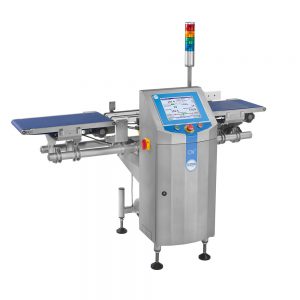General FAQ's
Contamination can happen at any point in the production process including at source. Critical Control Points (CCP) are put in place to prevent any potential issues from leaving the factory to help protect the consumer. Hygiene also provides a vital role in eliminating bacterial contamination.
Examples of physical contamination include; production line failure such as broken processing machinery, stones picked up at source in farming of the products or raw materials, bones within a product such as chicken or fish etc.
A contaminant is either physical or bacterial and can happen at any stage of the production process. Examples of physical contamination include;
- All Metals from other machine failure in the line
- Stones
- Bones
- Glass
- Incects
- Wood
- Plastics
Short answer
HACCP is a systematic approach to the identification, evaluation, and control of food safety hazards based on the following seven principles:
Principle 1: Conduct a hazard analysis.
Principle 2: Determine the critical control points (CCPs).
Principle 3: Establish critical limits.
Principle 4: Establish monitoring procedures.
Principle 5: Establish corrective actions.
Principle 6: Establish verification procedures.
Principle 7: Establish record-keeping and documentation procedures.
Slightly longer answer
HACCP is a management system in which food safety is addressed through the analysis and control of biological, chemical, and physical hazards from raw material production, procurement and handling, to manufacturing, distribution and consumption of the finished product. For successful implementation of a HACCP plan, management must be strongly committed to the HACCP concept. A firm commitment to HACCP by top management provides company employees with a sense of the importance of producing safe food.
HACCP is designed for use in all segments of the food industry from growing, harvesting, processing, manufacturing, distributing, and merchandising to preparing food for consumption. Prerequisite programs such as current Good Manufacturing Practices (cGMPs) are an essential foundation for the development and implementation of successful HACCP plans. Food safety systems based on the HACCP principles have been successfully applied in food processing plants, retail food stores, and food service operations. The seven principles of HACCP have been universally accepted by government agencies, trade associations and the food industry around the world.
Taken from the UK Food Standards Agency and the US department of Health and Human services website.
An X-ray system will offer the similar levels as a metal detector when it comes to ferrous and non-ferrous contaminants, but it will far excel with stainless steel, foil packaging and metallised film Detection. X-ray systems also offer the ability to detect bone, glass, ceramic or stone and dense plastics whilst also checking for product integrity, making it the complete solution in contaminant detection.
There are many agencies world wide that are responsible for Food safety standards
European Union
The parliament of the European Union (EU) makes regulations in the form of directives, many of which are mandatory and are incorporated into member countries’ national legislation. The EU parliament is advised on food safety by the European Food Safety Authority.
United Kingdom
The Food Standards Agency is the government department responsible for food safety In the UK and hygiene across the UK.
United States
The US food system is regulated by federal, state and local officials. The Food and Drug Administration publishes the Food Code, a set of guidelines that help food control authorities regulate the retail and food service industries.As well as the US Food and Drug Administration, several states have their own state programs to test for pesticide residues
LOMA SYSTEMS is a world leading brand in the food, pharmaceutical and packaging industries, offering Metal Detectors, Checkweighers and X-ray inspection systems.
Our reputation is based on consistent quality and advanced technology, the result of a continuous and far-reaching research and development program. Short lead times, modular design and excellent availability of spare parts, coupled with our passion for customer service, allow our customers to:
- Comply with, and exceed, product safety standards, weight legislation and retailer codes of practice
- Maximize production up-time
- Be self-sufficient
- Minimize lifetime costs
Our headquarters are based in the UK with direct sales and service operations in France, Germany, The Netherlands, Czech Republic, Poland, China, Canada and the US. We work closely with our distributors and OEM’s in over 100 countries worldwide to ensure that all our customers are fully supported.
Metal Detection FAQ's
Ever since LOMA SYSTEMS was founded in 1969, the company has worked very closely with both food manufacturers and retailers to deliver advances in technology. As a result, LOMA has an unrivalled level of experience and expertise, in the practice of effective metal detection within food industry production lines.
Our latest introduction of the IQ4 series of Metal Detectors is the result bringing together the combined experience of LOMA, LOCK Inspection, CINTEX and BRAPENTA, and nearly 50 years of customer-back innovation. LOMA’s engineering teams have employed our Designed to Survive philosophy to deliver great metal detection sensitivity in a package that is easy to install; easy to use; easy to clean and maintain; can withstand the arduous food production environments; and ultimately brings a brilliant cost of ownership.
Metal detection and X-ray inspection offer different capabilities –To assess Which you should choose, you should to carry out a Hazard Analysis and Critical Control Points audit. If the audit determines that metal is likely to be the only contaminant found, then a metal detector is likely to be the most cost-effective solution, however, if other issues such as packaging and product effect are raised by the audit then it is recommended you perform a full product test to establish the most suitable technology.
If, the audit determines that metal and other contaminants such as glass, mineral stone, calcified bone or high-density plastics and rubber are likely to be encountered, then X-ray is the only suitable solution. In many cases, there’s only one suitable solution. However, there may be occasions when it could be helpful to install both metal detection and X-ray inspection systems on the same production line.
LOMA are unable to state that metal detectors are safe for someone fitted with a heart pace-maker or any other kind of electronic implant, as we have no knowledge of heart pace-makers or other types of implant nor the particular limits that the individual person is fitted with.
However, we can confirm that our equipment meets all relevant safety standards, and the magnetic field strengths emitted into the environment by our equipment are at no higher a level than other electrical machinery that would be encountered in a factory environment. – i.e. if the person is permitted to work near electrical machinery then our equipment will not pose a risk.
We would clearly not recommend passing any person’s body through a metal detector.
Checkweigher FAQ's
An accurate Checkweigher will ensure less waste and enable more products to be produced from the same amount of inventory. Raw materials can be very expensive, and a checkweigher will ensure that you make the most of existing resources.
Example
Reducing the overfill of a 450-gram pack by one gram, on a line producing 200 packs per minute running 16 hours a day for 230 days a year, would result in you saving enough raw materials to make an additional 98133 products.
X-ray Inspection FAQ's
Stainless steel has a specific gravity of 7.7
Ferrous materials have a specific gravity of around 8.0
Non Ferrous (Brass or copper) materials have a specific gravity of around 8.8
From a Metal Detector point of view Ferrous, Non Ferrous and Stainless Steel have become standard test materials because of the different response they develop in a Metal Detector. Conversely, detectability of materials in X-ray systems are proportional to the specific gravity increase relative to the product; as can be seen all three materials are very close in density. Since Stainless Steel is both the lowest density of the above three materials and the most abundant in factories, it is generally accepted that this is the one test piece worthwhile testing. However, it is always a responsibility for any producer using a CCP to ensure that likely contaminants have been identified via HACCP risk assessment, so this should be additionally considered when selecting the contaminants used to challenge the CCP. Additionally, any specific customer requirements or supermarket specifications should be considered.
Note: Specific Gravity is defined as density normalised to water @ 1.0











